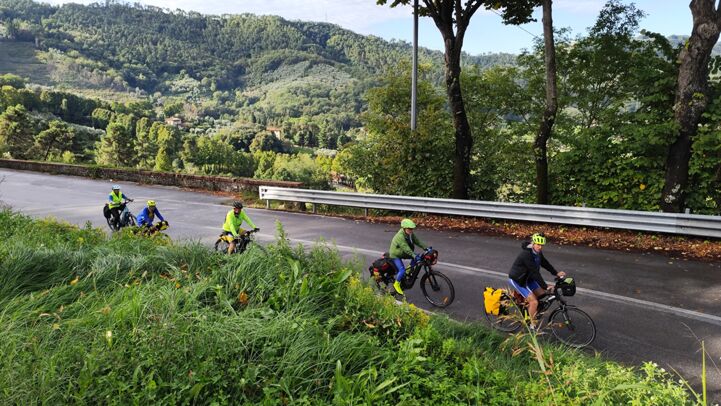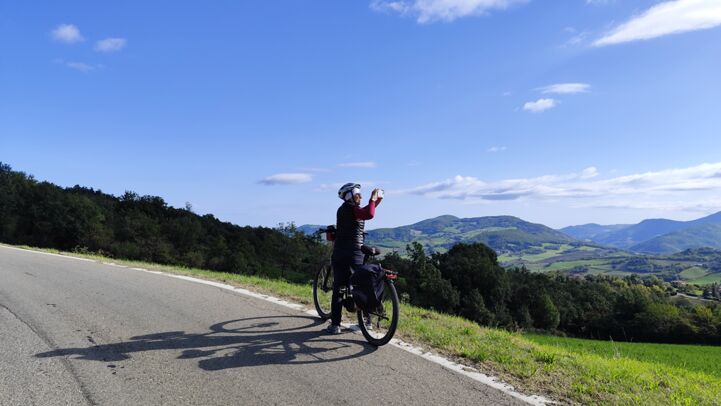Using EuroVelo as a local advocacy tool: lessons from Italy’s Bicistaffetta

has been doing with Bicistaffetta. This initiative translates as ‘bicycle relay’ and started in 2001. FIAB volunteers, staff, councillors and representatives of local sections cycle once a year, for around a week, on a route. Along the way, they meet and cycle with mayors and city councillors, bringing Italian cycle routes to their attention.
For the past editions of Bicistaffetta, the chosen itinerary was a stretch of the four EuroVelo routes crossing Italy. As cycling tourism becomes increasingly popular in Italy, EuroVelo routes are a tourism product almost ready to be exploited, but many people do not know about it. Adequate planning, infrastructure, and services can attract more cycling tourists and contribute to the growth of rural areas, easing the seasonal pressure on tourist hotspots and promoting a better quality of life for the local inhabitants, too.


considering it is the Jubilee year, and that proverbially all roads lead to Rome – and this one in particular. The relay started from Como, close to the Swiss border, on 28 September, to conclude eight days later in Lucca, Tuscany. Along these 460 kilometres of EuroVelo 5, the peloton of around fifty cyclists encountered a great green corridor to Milan, good infrastructure until Piacenza, and a lot of road works financed by the National Recovery and Resilience Plan, due to be completed by 2026. After the Cisa mountain pass, crossing the Apennines, the route was mostly on low-traffic roads, but the organisers call for improved and safer infrastructure and better maintenance.
In the framework of Bicistaffetta, FIAB organises congresses, gatherings, and meetings with local administrators. As volunteers and councillors cycle together, it is an opportunity to connect the local activists with elected representatives. Moreover, the presence of a yellow-dressed peloton does not go unnoticed in small and big towns and attracts the local and national press, which amplifies the reach of the initiative.
Commenting on Bicistaffetta 2025, Luigi Menna, FIAB President, said: “This year, the Bicistaffetta – which celebrates its 25th anniversary next year – took on special significance as it followed the route of the Via Francigena, with its special spirit of brotherhood and sharing, especially in these times when global peace is at risk. Another important aspect is its European value: the Francigena has its own cycle route, EuroVelo 5, which largely follows the same route and offers cycling tourists an unforgettable experience. In this context, FIAB plays a fundamental role as the National EuroVelo Coordination Centre for Italy.”
More about Bicistaffetta (in Italian)
Article by Jessica Casagrande